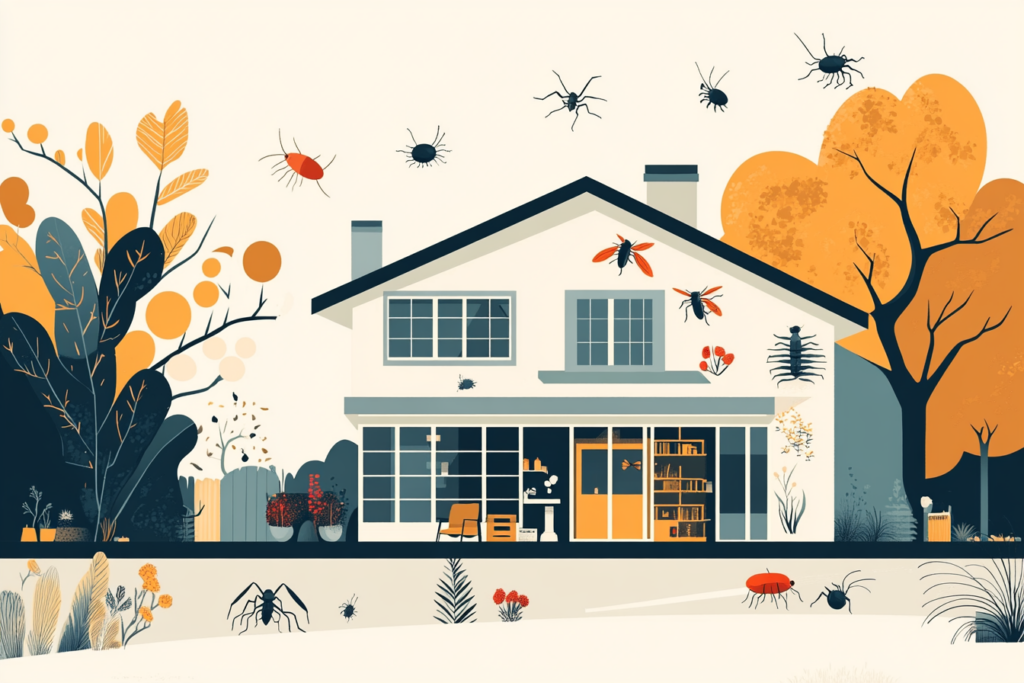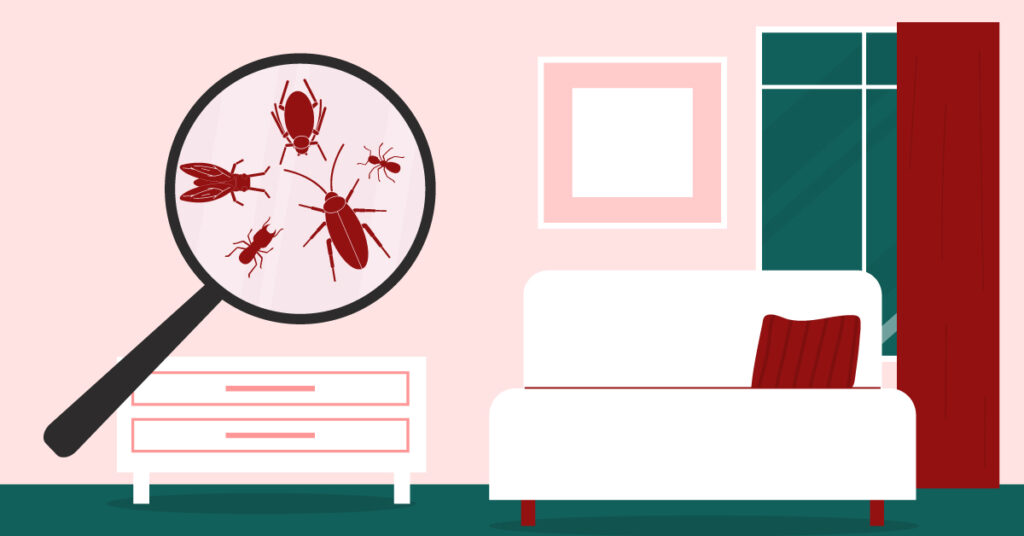Most homeowners know how to handle ants, cockroaches, mice, and wasps. But what about pests that don’t show up in standard exterminator pamphlets? Some household invaders are so rare or regional that they catch even seasoned homeowners off guard. Recognizing these lesser-known pests can save you from structural damage, health hazards, or major infestations down the line.
Below is a regional breakdown of rare and unusual pests that might be lurking in your home—and how to keep them out.
Pacific Northwest: Moisture Lovers and Wood Destroyers
This region is known for its wet climate and dense forests, making homes vulnerable to wood-destroying insects and pests that thrive in damp conditions. Older houses with poor ventilation or plumbing issues are especially at risk.
Moisture Ants
- Thrive in damp, decaying wood
- Smaller than common carpenter ants but nest in similar places—under floors, in wall voids, or around leaks
- Their presence usually means a moisture issue in your home
How to handle them:
- Fix plumbing leaks immediately
- Replace wet or rotting wood
- Use boric acid bait stations near problem areas
Golden Paper Wasps
- Less aggressive than yellowjackets
- Recognizable by their metallic golden coloring
- Often nest in attics or eaves in Oregon and Washington
Prevention tips:
- Seal soffits and attic vents with fine mesh
- Knock down new nests before they grow
Southwest: Desert Pests That Thrive Indoors
Hot, arid landscapes don’t stop pests from finding shelter in cool, irrigated homes. Many desert insects are drawn indoors by water sources and artificial lighting, especially during the monsoon season.
Palo Verde Beetles
- Up to 3 inches long with strong mandibles
- Attracted to lights but rarely cause damage indoors
- Appear mostly in Arizona and New Mexico during monsoon season
Management strategy:
- Keep outdoor lighting dim or switch to yellow “bug” bulbs
- Seal windows tightly to keep them from flying indoors
Kissing Bugs (Triatomines)
- Known for feeding on blood while people sleep
- Can transmit Trypanosoma cruzi, which causes Chagas disease
- Found in Texas, Arizona, and southern California
Control steps:
- Install door sweeps and window screens
- Seal cracks and crevices in the foundation and walls
- Avoid attracting rodents, which kissing bugs use as hosts
Southeast: Humid Invaders and Exotic Hitchhikers
The warm, humid climate supports high insect activity year-round. Tropical storms and international shipping routes also make this region a hotspot for invasive and exotic pests.
Cuban Tree Frogs
- Invasive amphibians that sneak into homes through vents or drainpipes
- Their skin can irritate humans, and they prey on native species
Prevent entry:
- Cover plumbing vents with fine mesh
- Install tight-fitting drain covers in laundry rooms and bathrooms
Ghost Ants
- Tiny, pale-colored ants common in Florida homes
- Hard to spot due to their translucent bodies and erratic foraging paths
- Nest in wall voids, behind baseboards, and even inside electronics
Control method:
- Use sugar-based baits with slow-acting poisons
- Avoid spraying—this can cause colony splitting and spread the infestation
Midwest: Seasonal Surprises and Hidden Nesters

Homes in the Midwest face wide seasonal shifts, with pests seeking warmth in the fall and shelter during wet springs. Storage areas and attics often harbor unusual insects that go unnoticed for months.
Larder Beetles
- Feed on stored food, pet food, leather, and even dead insects or rodents
- Often enter homes in spring and early summer
- Found in attics, basements, and pantries
Elimination tips:
- Deep clean food storage areas
- Remove animal remains from crawl spaces or wall voids
- Use sticky traps to monitor activity
Western Conifer Seed Bugs
- Mistaken for stink bugs, but they’re longer with leaf-shaped hind legs
- Emit a pungent odor when disturbed
- Invade homes in the fall to winter
Preventative measures:
- Seal around doors, windows, and utility lines
- Vacuum them up—avoid crushing to prevent the smell
Northeast: Cold-Hardy Intruders
With long winters and compact urban housing, many pests in the Northeast are adapted to cold weather and tight indoor spaces. They exploit heating systems and structural crevices to survive the freeze.
House Centipedes
- Fast-moving arthropods with up to 30 legs
- Not dangerous, but their appearance is startling
- Thrive in damp basements, bathrooms, and crawlspaces
How to reduce them:
- Use a dehumidifier in basements
- Seal foundation gaps
- Clear out clutter to remove hiding spots
Firebrats
- Related to silverfish but more heat-tolerant
- Hide in hot water heater closets or boiler rooms
- Eat starches, glue, and paper
Prevention plan:
- Lower indoor humidity
- Store paper items in sealed bins
- Vacuum regularly around baseboards and heating units
Mountain Regions: Elevation-Specific Invaders
At higher elevations, pests have to be adaptable. Wildlife like woodrats and cold-tolerant insects enter homes looking for insulation, nesting material, or food, especially in mountain cabins and rural properties.
Pack Rats (Woodrats)
- Build large nests using household debris, insulation, and even shiny objects
- Found in Colorado, Utah, and higher elevations
- Attracted to garages, attics, and sheds
Control methods:
- Remove nesting materials
- Use exclusion mesh on vents and soffits
- Set snap traps near suspected nest sites
Boxelder Bugs
- Black with red markings
- Congregate on south-facing walls and sneak indoors for warmth
- While not harmful, they leave stains and foul odors
Management steps:
- Caulk around windows and siding gaps
- Remove female boxelder trees near the home
- Use a vacuum, not chemicals, to remove them indoors
Alaska and Northern Regions: Cold-Climate Specialists
Harsh winters and limited daylight mean pests must be resilient and opportunistic. In these climates, infestations often go unnoticed until spring when snow melts and activity resumes indoors.
Snow Fleas (Springtails)
- Tiny jumping insects that appear on snow in late winter
- Often mistaken for dirt or ash on the surface
- Attracted to moisture, and can infest basements
Moisture control is key:
- Fix leaks in crawlspaces or under sinks
- Run dehumidifiers in affected areas
- Treat foundation soil with insecticidal soap if needed
Rodent Mites
- Hitchhike indoors on mice or voles
- Bite humans when their host leaves the nest or dies
- Almost invisible without magnification
How to handle them:
- Address rodent infestations quickly
- Discard contaminated insulation
- Clean surfaces with hot water and detergent
Prevention and Inspection: What Works Everywhere
Rare pests might not be on your radar, but early detection matters. Whether you’re in the Southwest desert or a coastal town, here are universal prevention tips:
- Seal entry points: Check doors, windows, attic vents, and crawlspace access
- Control moisture: Run dehumidifiers and fix plumbing leaks
- Eliminate clutter: Reduces hiding places for insects and rodents
- Inspect regularly: Pay attention to basements, attics, garages, and utility rooms
- Call a professional: If you spot something unusual, don’t guess. Some rare pests require specialized treatment plans
Final Thoughts
Not all pests are obvious. From kissing bugs in Arizona to larder beetles in Illinois, rare intruders can cause damage and confusion. Knowing what to look for in your region helps you stay ahead of infestations. Don’t wait for something strange to show up—inspect, seal, clean, and monitor now.
Want to explore more home safety tips and pest control guides? Check out our latest articles on seasonal pest prevention, moisture control, and DIY exclusion techniques to keep your home clean and secure year-round.
You might also be interested in: 5 Pest Control Tips for Homes with Children and Pets




